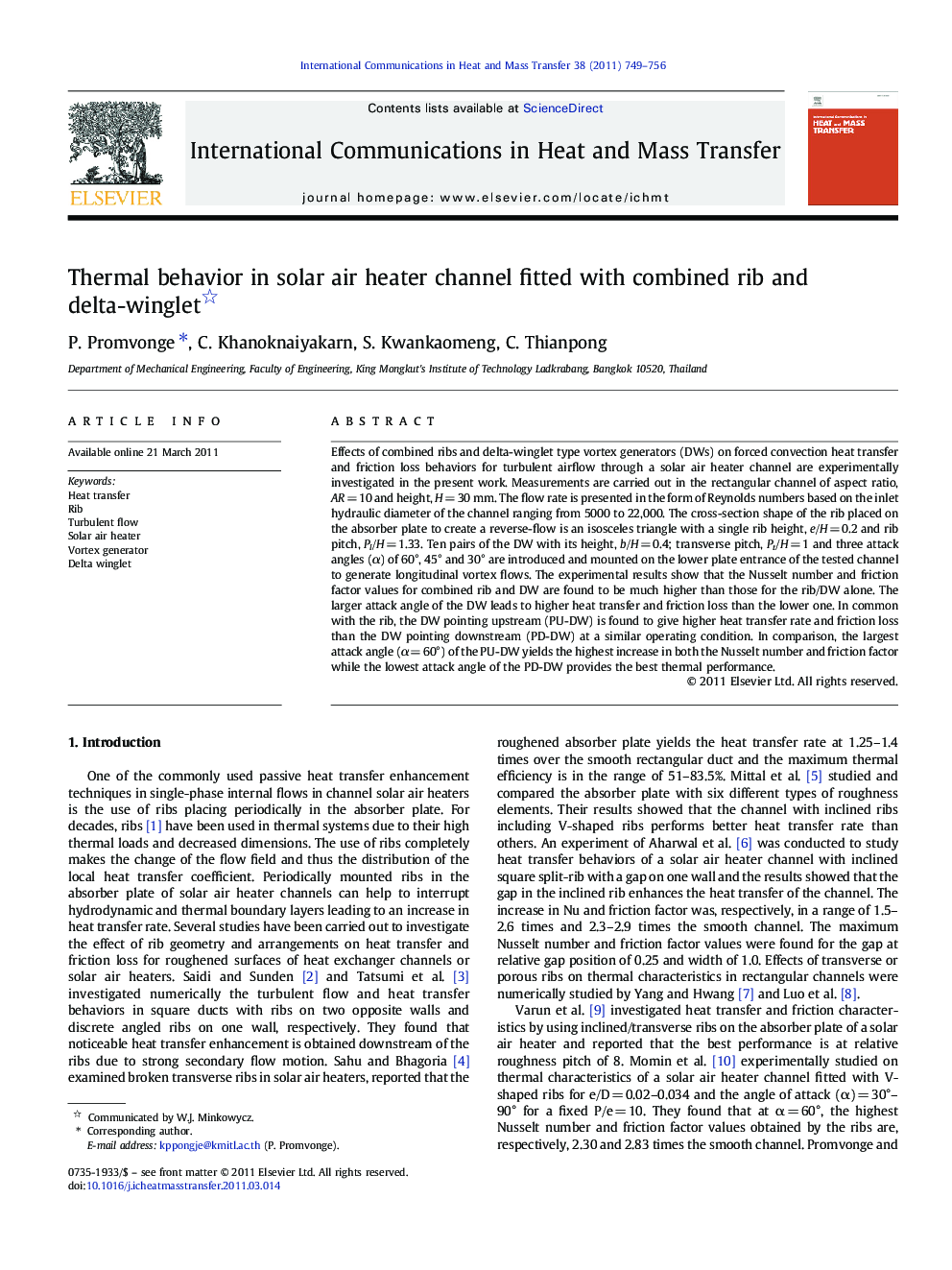| Article ID | Journal | Published Year | Pages | File Type |
|---|---|---|---|---|
| 654122 | International Communications in Heat and Mass Transfer | 2011 | 8 Pages |
Effects of combined ribs and delta-winglet type vortex generators (DWs) on forced convection heat transfer and friction loss behaviors for turbulent airflow through a solar air heater channel are experimentally investigated in the present work. Measurements are carried out in the rectangular channel of aspect ratio, AR = 10 and height, H = 30 mm. The flow rate is presented in the form of Reynolds numbers based on the inlet hydraulic diameter of the channel ranging from 5000 to 22,000. The cross-section shape of the rib placed on the absorber plate to create a reverse-flow is an isosceles triangle with a single rib height, e/H = 0.2 and rib pitch, Pl/H = 1.33. Ten pairs of the DW with its height, b/H = 0.4; transverse pitch, Pt/H = 1 and three attack angles (α) of 60°, 45° and 30° are introduced and mounted on the lower plate entrance of the tested channel to generate longitudinal vortex flows. The experimental results show that the Nusselt number and friction factor values for combined rib and DW are found to be much higher than those for the rib/DW alone. The larger attack angle of the DW leads to higher heat transfer and friction loss than the lower one. In common with the rib, the DW pointing upstream (PU-DW) is found to give higher heat transfer rate and friction loss than the DW pointing downstream (PD-DW) at a similar operating condition. In comparison, the largest attack angle (α = 60°) of the PU-DW yields the highest increase in both the Nusselt number and friction factor while the lowest attack angle of the PD-DW provides the best thermal performance.
